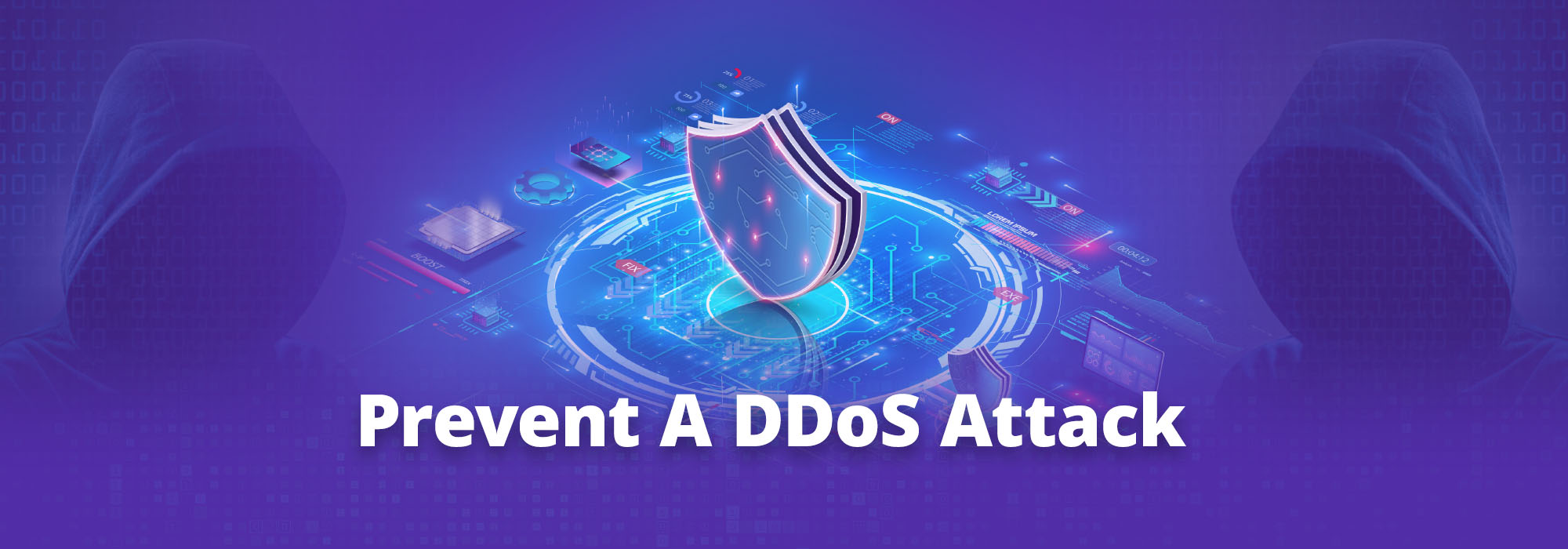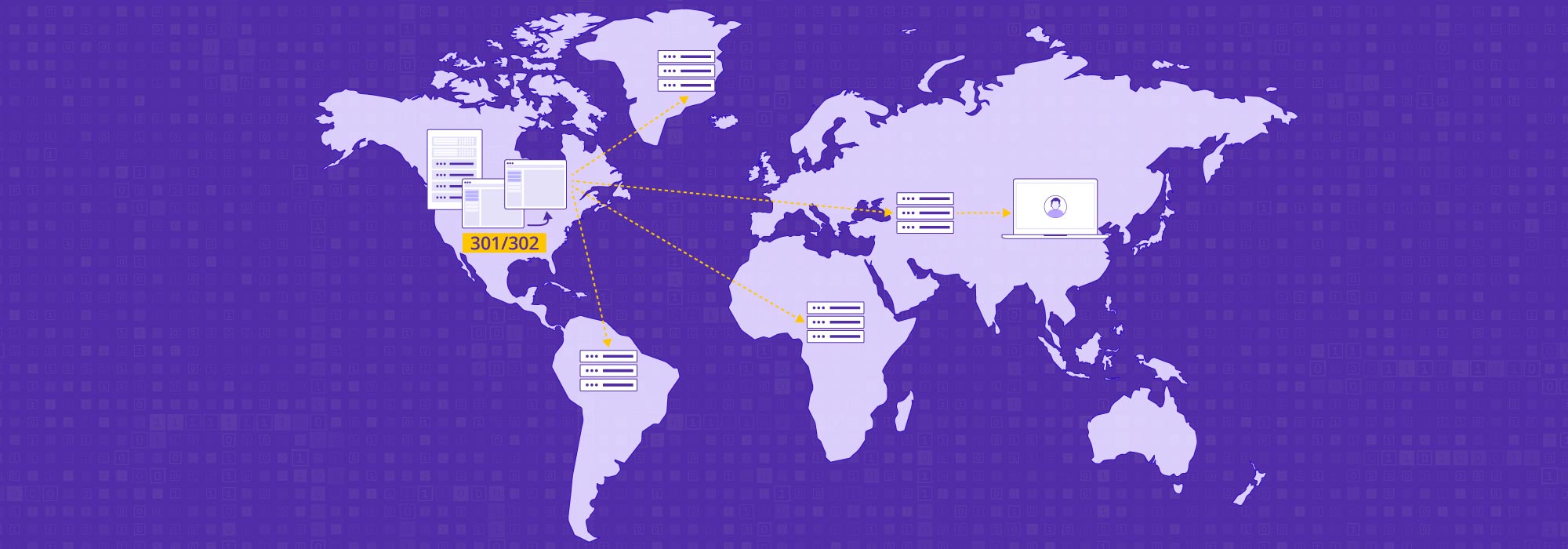DDoS 攻撃とは何ですか?
分散サービス妨害攻撃または DDoS は、一般的なタイプの攻撃です。 サイバー攻撃 悪意のある攻撃者が Web サーバー、サービス、またはネットワークに大量のトラフィックを送りつけ、通常の操作を妨害します。
DDoS 攻撃は、標的の Web サーバーまたはネットワークを、メッセージ、接続要求、または偽のパケットで圧倒することによって実行されます。標的のサーバーがすべてのリクエストに対応しようとすると、帯域幅の制限を超え、サーバーの速度が低下したり、クラッシュしたり、使用できなくなったりします。一般的なアナロジーは、交通高速道路のアナロジーです。交差点に近づくと、さらに多くの車が合流すると、渋滞が発生し、すべての人が足を止めます。これには、あなたの後ろにいる他の車も含まれます。
標的にされたサーバーがビジネスにとって重要なシステムである場合、ネットワーク インフラストラクチャ全体がダウンし、ビジネス オペレーションが停止する可能性があります。さらに、サーバーのダウンタイム中に、ランサムウェアや恐喝などの他の種類の攻撃も開始される可能性があり、そのすべてがビジネスに多大な経済的影響をもたらします.
通常、トラフィックはボットネットと呼ばれる侵害されたシステムやデバイスのグループから来ており、マルウェアが含まれています。より多くのデバイス、特に IoT デバイスがインターネットに接続されるにつれて、この種のサイバーセキュリティの脅威はより簡単に実行できるようになっています。
専用ガイドをお読みください: DDoS 攻撃とは何ですか?
DDoS 攻撃の歴史
サイバー攻撃は新しい現象ではありません。最初の DoS 攻撃は 1974 年に発生し、イリノイ州の 13 歳の少年の好奇心によって実行されました。彼は、当時の新しい「ext」コマンドの脆弱性を利用して、31 のイリノイ大学のコンピューター端末を同時にシャットダウンさせました。 1990 年代、インターネット リレー チャットは、単純な帯域幅 DoS 攻撃とチャット フラッドの標的になりました。しかし、最初の大規模な DDoS (分散型サービス拒否攻撃) は 1999 年にハッカーが「Trinoo」と呼ばれるツールを使用してミネソタ大学のコンピューター ネットワークを 2 日間無効にしたときに発生しました。他の攻撃が続き、今日見られるより大規模で広範囲にわたるサイバー攻撃の基礎を築きました。
DDoS 攻撃で何が起こるか
DDoS 攻撃によって Web プロパティやビジネスにさまざまな損害を与える可能性があることを考えると、それらがどれほど単純な前提であるかは驚くべきことです。 Web、DNS、およびアプリケーション サーバー。ルーター; Web アプリケーション ファイアウォール。およびインターネット帯域幅は、毎日膨大な量の接続を処理します。 DDoS 攻撃は、侵害された一連のシステムがサーバーの処理能力を超える数の接続を送信したときに発生します。これは、 ボットネット またはハイジャックされたシステムのリンクされたネットワーク。一部の DDoS 攻撃は、サイトやサーバーを制御するシステムを標的とする偽装として発生します。これにより、多くの場合、トロイの木馬ウイルスの形で、マルウェアに感染する可能性が生じます。その後、システムは最初に侵入したボットネットの一部になります。攻撃者は、企業のネットワークのさまざまな部分を同時に標的にしたり、これらの DDoS イベントを使用して、盗難や詐欺などの他の犯罪を隠蔽したりする可能性があります。
DDoS 攻撃の種類
DDoS 攻撃は、使用される攻撃ベクトルとその使用方法によって異なります。 DDoS 攻撃の一般的なタイプには次のようなものがあります。
ボリューメトリック攻撃
ボリューメトリック攻撃は、マシンのネットワークを狙ってその帯域幅を圧倒する攻撃です。これは最も一般的なタイプの DDoS 攻撃であり、大量の偽のデータ リクエストでその容量を圧倒することによって機能します。マシンがこれらの悪意のあるデータ リクエストのチェックに専念している間、正当なトラフィックは通過できません。
ユーザー データグラム プロトコル (UDP) フラッドとインターネット制御メッセージ プロトコル (ICMP) フラッドは、ボリューメトリック攻撃の 2 つの一般的な形態です。 UDP 攻撃では、攻撃者は UDP 形式とその高速データ転送機能を利用して、完全性チェックをスキップし、増幅攻撃と反射攻撃を生成します。 ICMP フラッドでは、攻撃者はネットワーク ノードに焦点を合わせて偽のエラー リクエストをターゲットに送信します。ターゲットは圧倒され、実際のリクエストに応答できなくなります。
プロトコル攻撃
プロトコル攻撃は、サーバー リソースを消費することによって機能します。低速の ping、不正な形式の ping、および部分的なパケットを送信して、接続を検証するネットワーク領域を攻撃します。これらは、ターゲット コンピューターのメモリ バッファーを過負荷にし、システムをクラッシュさせます。プロトコル攻撃も Web アプリケーション ファイアウォールを侵害する可能性があるため (WAF)、このタイプの DDoS 脅威はファイアウォールで阻止できません。
SYN フラッド攻撃は、最も一般的なタイプのプロトコル攻撃の 1 つです。ファイナライズせずに TCP/IP 接続を開始することで機能します。クライアントは SYN (同期) パケットを送信し、その後サーバーは ACK (確認応答) をクライアントに送り返します。その後、クライアントは別の ACK パケットで応答するはずですが、応答せず、サーバーを待機させ続けるため、リソースが使い果たされます。
アプリケーション層攻撃
これらは、L7 レイヤーまたは Open Systems Interconnection (OSI) モデルの最上位レイヤーに焦点を当てた攻撃です。これらは主に Web トラフィックに焦点を当てており、HTTP、HTTPS、DNS、または SMTP を介して起動される可能性があります。アプリケーションの脆弱性を攻撃することで機能し、ユーザーにコンテンツを配信できなくなります。
アプリケーション層への攻撃を阻止するのが難しい理由の 1 つは、使用するリソースがはるかに少なく、場合によっては 1 台のマシンしか使用しないためです。これにより、大量の正当なトラフィックのように見え、サーバーをだます.
ハッカーがこれらのアプローチを組み合わせて、ターゲットに多面的な攻撃を仕掛けることも可能です。
DDoS 攻撃は防ぐことができるのか?
DDoS 攻撃は性質上完全に防ぐことはできませんが、効果的な戦略を講じることでその影響を大幅に軽減できます。予防策としては、疑わしいトラフィックを監視して軽減するファイアウォール、侵入検知システム、DDoS 保護サービスなどの強力なセキュリティ対策を実装することなどが挙げられます。セキュリティ プロトコルを定期的に更新し、コンテンツ配信ネットワークを使用してトラフィックを分散し、インシデント対応計画を策定することも、DDoS 攻撃によるリスクと潜在的な損害を最小限に抑える上で重要です。
より具体的な戦略については、以下をお読みください。
DDoS 攻撃を防ぐ 9 つの方法
自動化技術は、サイバー攻撃の防止に部分的に役立ちますが、Web サイトを最大限に保護するには、人間の知性と監視も必要です。従来の Web 構造では不十分です。多層 クラウド セキュリティ 経験豊富で献身的なエンジニアによって開発および監視され、最高の保護を提供します。 DDoS 攻撃がどのように機能するかを理解し、ネットワークの動作に精通することは、サイバー攻撃による侵入、中断、およびダウンタイムを防ぐための重要なステップです。 DDoS 攻撃を防ぐためのヒントを次に示します。
1. 健全なネットワーク監視の実施
DDoS の脅威を軽減するための最初のステップは、いつ攻撃を受けようとしているのかを知ることです。これは、ネットワークを視覚的かつリアルタイムで監視できるテクノロジーを実装することを意味します。異常が発生したときに追跡できるように、サイトが平均して使用する帯域幅の量を把握します。
DDoS 攻撃は視覚的な手がかりを提供します。ネットワークの通常の動作に精通している場合は、これらの攻撃をリアルタイムで簡単に検出できます。
2. 基本的なセキュリティ衛生を実践する
DDoS 脅威に対する基本レベルのセキュリティを確保するために、すべての企業が実行できる簡単な手順がいくつかあります。これらには、複雑なパスワードを使用する、数か月ごとにパスワードのリセットを義務付ける、メモにパスワードを保存または書き留めるのを避けるなどのベスト プラクティスが含まれます。これらは取るに足らないことのように聞こえるかもしれませんが、基本的なセキュリティ対策を怠ったために、多くの企業が危険にさらされていることは驚くべきことです。
3. 基本的なトラフィックのしきい値を設定する
他のいくつかの技術的なセキュリティ対策を使用して、DDoS 攻撃を部分的に軽減できます。これらには、ルーターのレート制限や疑わしいソースからのパケットのフィルターなど、トラフィックのしきい値と制限の設定が含まれます。低い SYN、ICMP、および UDP フラッド ドロップしきい値の設定、IP バックリスト、ジオブロッキング、および署名の識別は、緩和の第 1 レベルとして採用できるその他の手法です。これらは時間稼ぎにつながる簡単な手順ですが、DDoS 攻撃は常に巧妙化しており、そのような攻撃を完全に阻止するには別の戦略を講じる必要があります。
4. セキュリティ インフラストラクチャを最新の状態に保つ
ネットワークは、最も弱いリンクと同じくらい強力です。これが、インフラストラクチャ内のレガシー システムや古いシステムに注意することが重要である理由です。これらのシステムは、侵害されると攻撃のエントリ ポイントになることがよくあります。
データ センターとシステムを最新の状態に保ち、Web アプリケーション ファイアウォールやその他のネットワーク セキュリティ プログラムにパッチを適用します。さらに、ISP またはホスティング プロバイダー、セキュリティおよびデータ センター ベンダーと協力して、他の高度な保護機能を実装することもお勧めします。
5. DDoS 対応の戦闘計画を準備する
DDoS 攻撃が発生してから対応を考え始めても手遅れです。影響を最小限に抑えるために、事前に対応計画を準備する必要があります。対応計画には、理想的には以下を含める必要があります
- ツールのチェックリスト – 高度な脅威の検出、評価、フィルタリング、およびソフトウェアとハードウェアを含む、実装されるすべてのツールのリスト。
- 対応チーム – 攻撃が検出されたときに実行する、明確に定義された役割と責任を持つ担当者のチーム
- エスカレーション プロトコル – 攻撃が発生した場合に誰に通知し、エスカレーションし、関与させるかについて明確に定義されたルール
- コミュニケーション計画 – ISP、ベンダー、顧客などの社内外の利害関係者に連絡するための戦略と、リアルタイムでニュースを伝える方法。
6. 十分なサーバー容量を確保する
ボリューメトリック DDoS 攻撃は、ネットワーク帯域幅を圧倒することで機能するため、それらに対抗する 1 つの方法は、帯域幅をオーバープロビジョニングすることです。そのため、帯域幅を追加することでサーバー容量が大量のトラフィック スパイクを処理できるようにすることで、DDoS 攻撃によって引き起こされる突然の予期しないトラフィックの急増に備えることができます。これで DDoS 攻撃を完全に阻止することはできませんが、リソースが使い果たされる前に、他の防御策を準備するための追加の数分が得られることに注意してください。
7. クラウドベースの DDoS 保護ソリューションを調べる
調べるのも賢明です クラウドベースの DDoS 防御 DDoS 緩和戦略の一部としてのソリューション。クラウドは、プライベート ネットワークと比較して、より多くの帯域幅とリソースを提供します。クラウド データ センターは、悪意のあるトラフィックを吸収して他の領域に分散させ、意図したターゲットに到達するのを防ぐことができます。
8. コンテンツ配信ネットワーク (CDN) を使用する
DDoS 攻撃に対処する効果的な最新の方法の 1 つは、コンテンツ配信ネットワーク(CDN) を使用することです。 DDoS 攻撃は、ホスティング サーバーに過負荷をかけることで機能するため、CDN は、地理的に分散し、ユーザーに近い複数のサーバー間で負荷を均等に分散することで支援できます。この方法では、1 つのサーバーがダウンしても、まだ稼働しているサーバーが残ります。 CDN は、証明書の管理と自動証明書の生成と更新も提供できます。
9. プロフェッショナルな DDoS 緩和サポートを受ける
迷わず専門業者に依頼してください。 DNS プロバイダーや CDNetworks などの企業は、必要に応じて訪問者を再ルーティングし、パフォーマンスを監視し、攻撃が発生した場合に多数のサーバーにトラフィックを分散することで、Web プロパティを保護するのに役立ちます.
襲われた場合の対処法
壊滅的な結果を防ぐには早期検出が重要ですが、DDoS 攻撃の標的になった場合に実行できる手順があります。最初のステップは、攻撃を処理できるクラウドベースのDDoS 緩和システムを確実に導入することです。追加の手順は次のとおりです。
- システムの新しい IP アドレスの設定
- 最大限のセキュリティを確保するために DNS レコードが設定されていることを確認する
- DDoS 攻撃のハブとして認識されている国をブロック
- メール専用の専用サーバーを持つ
- サーバーへの接続の記録
CDNetworks は、ビジネスや組織を保護するだけでなく、システムとそのサーバーに保存されている会社とクライアントの知的財産も保護するセキュリティ ソリューションを提供します。プロアクティブなアプローチにより、DDoS 攻撃による損害を防ぐことができます。当社の製品の詳細については、お問い合わせフォームに記入してください。



